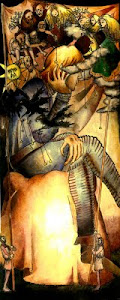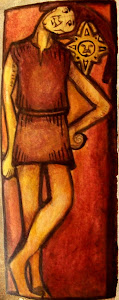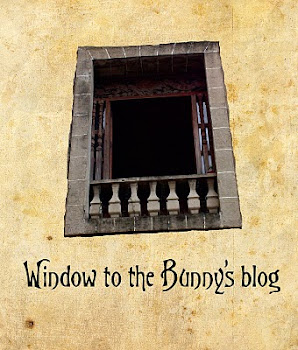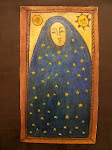
This is a Victorian illustration of a goldfish. With its beautiful print details (an engraving, I think), I cant't help to look at them closely. I just recently found this illustration in an interesting site about old book illustration lovers! I just discovered them via my tumblr. The site is called Old Book Illustrations. You can visit them here or to my sidebar from the link list.
And I just also discovered this intriguing, extreme surreality book of Max Ernst from the Bunny (which I also got from her the ideas about a more analytical, depth analysis about my recent post Cross Culture). The novel is "Une Semaine de Bonté" or "A Week of Kindness". It is a collage of Victorian engravings pasted in a very random manner, and then progressing with a very loose theme for every day of the week. What the artist, as they say, might want to convey an interpretation of his subconscious self to his reader. He put them in a random order and composition and present them to the viewer. Then he let them judge or interpret in what they saw.
But for me, they seem to present a lost time, that feels so strange because it is conflicting between the old, traditional, pre-industrial era and the new, machine, automated age. They belong to a different world but at the same time live with us. Shifting in our known history and time. Some kind of an alternate world.
And I also like to share this amazing Norwegian artist named Odd Nerdrum. He was one of my inspiration for creating the old world atmosphere in art and realistic yet strange and almost medieval rendering. His biography says he studied Dutch painting techniques, and while it appears to be partly like that, the picture below is reminiscent also of Hieronymous Bosch. Some of Nerdrum's recent paintings show more of Blake, though. In any manner, everything comes across as these highly spiritual paintings, but it is of a religion that only Nerdrum knows, in his bleakness, in his purgatory airs.
Somehow for me, Ernst and Nerdrum, despite the differences in style and technique, have a similarities. One of it is their distortion of reality and themes of lost time or some kind of a forgotten era; they are able to show it through their wonderful art in their own remarkable manner.
As of now, I am currently finishing my studies and thesis this year (as you know, in our country, June is the start of our classes-as well as the rainy season-and ends in March next year.) I will be quite happy to see the trees again and be able to walk again within the green campus with canopy of Acacia trees.






































.jpg)
